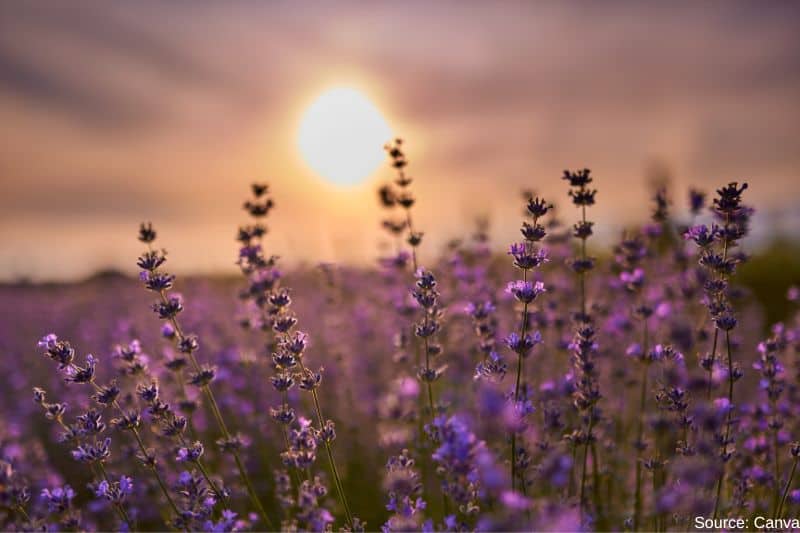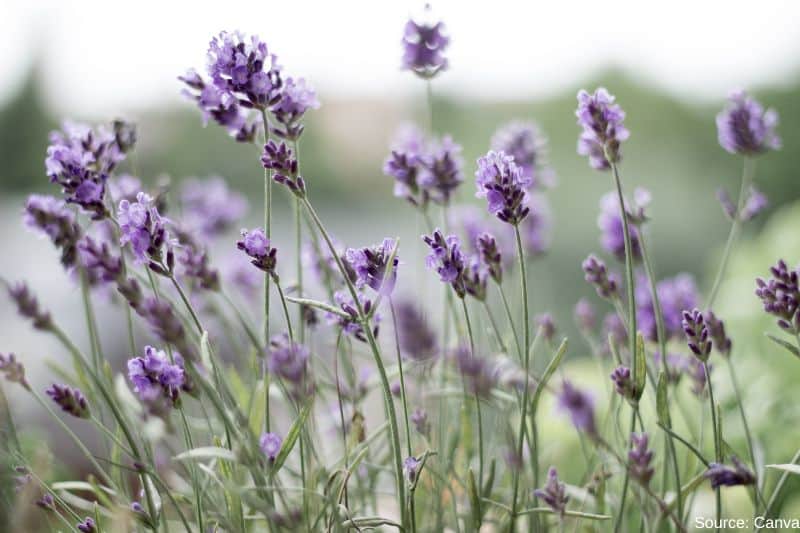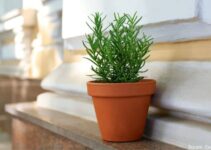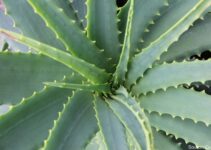If you’re a passionate gardener who loves growing plants that make your home look beautiful and smell heavenly, then lavender is definitely one thing you will want to grow in your home.
Scientifically known as Lavandula angustifolia, lavender is easy to grow and, depending on the species, tolerant to drought, humidity, heat, and other hostile growing conditions.
However, that’s not to say lavenders are the ultimate invincibles in the kingdom Plantae. Sometimes, you might notice unusual traits in your lavender plants, like curling leaves. So, why does leaf curling happen in lavender plants?
Well, that’s what this article is all about. Here, we’ll explore the possible reasons for lavender leaves curling, how you can fix this common problem, and most importantly — how you can prevent the problem from occurring in the future. Of course, there’s so much more lined up, so let’s dive right in!
Read: Why Are My Aloe Vera Leaves Curling?
Reasons Lavender Leaves Are Curling
When your lavender plant is healthy, we expect to see the leaves flat. However, if they’re beginning to curl up, it should get you concerned whether everything about their health is up to par.
That said, why do lavender leaves curl up?
Well, there are several reasons why this happens. In most cases, lavender leaves curling is a sign that that they’re not getting enough sunshine. It can also imply inadequate watering, excessive heat, or even an infection. Of course, there are many other possible reasons, so let’s dig deep.
1. Inadequate Sunshine
Lavender plants are undeniably charming to behold, especially when blooming. But do you know what it takes to keep them looking healthy and happy?
Sunshine. A lot of it. Without it, they’ll send out a visual cry, and one way they do that is by curling their leaves.
Usually, lavenders need at least 6 hours of full sunshine to be happy. That’s the same amount as daylilies, dahlias, coneflowers, butterfly weeds, and other full-sun perennials.
Any shorter time in the sun means they aren’t getting enough of it, which could cause them to curl their leaves.
So, if you just noticed that, check whether where you’ve placed them is giving them enough sun. If you’re working with the smaller lavender species used as indoor plants, you might want to move them to the south-facing window so they get enough sun.
Alternatively, you can take them out to have them get enough time to interact with the sunshine.
2. Excessive Heat
In some cases, curling lavender leaves signals excessive heat. In this case, curling doesn’t mean that the health of the plant is deteriorating. Instead, it’s a natural adaptation that lavenders have to help conserve moisture.
You see, lavenders are meant for deserts. So, like every other desert plant, they’re innately designed to respond in a certain way when temperatures soar to help them improve the efficiency of water use and minimize water loss.
One way they respond to rising temperatures is by curling their leaves. They do this to minimize the surface area of the leaves, which, in turn, reduces the amount of water they lose through transpiration.
If that’s the reason your leaves are curling, then you need not get worried. It doesn’t mean that your lavender plants are dying. It’s natural and harmless, and your plant leaves will resume their usual shape when the temperature drops.
Alternatively, consider positioning your plants so that they receive full sun while at the same time getting enough shielding during the hottest moments of the day.
3. Inadequate Water
Lavenders aren’t the kind of plants that will require watering a couple of times every week. They’re desert plants meant to thrive in water scarcity. However, if you’ve been overly reluctant to water your lavenders, it could be the reason the leaves are beginning to curl up.
With inadequate watering, lavenders can easily perceive that they’re headed into a drought period, prompting them to activate their natural water-conservation mechanisms, including curling up of their leaves.
Try to water your lavenders more often. But before you do that, confirm whether the soil is completely dry. Only water your lavenders when the soil is dry, especially when the plants are established but yet to bloom. This could mean watering once every two weeks or so.
However, if you just did a transplant, watering should come sooner and heavier until the plants are established. The rule of thumb is to apply a gallon of water for every plant once per week.
Once they get into the flowering stage, increase this frequency to 2 times a week, but reduce the amount you apply each time by working with 1/2 gallon of water each time. Watering more often will encourage more blooms during this period.
And remember, when watering your lavender plants, it’s best to target the base. That’s much like hitting the bull’s eye. It will keep the leaves from developing mold and ensure that the roots get enough water supply to prevent them from rotting.
4. Fungal Infection
Sometimes, leaf curling in lavenders is a sign of fungal disease. This is especially true in cases where the lavenders are being overwattered or grown in slow-draining or high-humid areas.
So, if you’ve not been taking proper care of your lavender, it might have picked up a fungal disease and showing it through the curled leaves.
Root rot, botrytis, septoria leaf spot, and alfalfa mosaic disease are some of the most common fungal diseases in lavender. Check whether the curling leaves are accompanied by other unusual signs.
Where the plant is suffering from a fungal disease, you might notice other signs like:
- Overall drooping appearance
- Leaves turning yellow or brown
- Flowers giving off less fragrance
- Foliage turning grey
- Leaves wilting and eventually dying
- Fewer flowers
Check out for either of these signs. You may need to remove the infected leaves, spray fungicide, or adopt other measures depending on the nature of the disease and the extent it has affected your plants.
How to Prevent Lavender Leaf Curling?
Now that you know what causes lavender leaves to curl and what you can do, the next question remains if there’s a way to prevent the leaf curling in the first place.
The good news? Yes, you can prevent lavender leaf curling by adopting simple measures. Here are some of the ways:
- Plant Lavenders Exclusively Outdoors: This may not be the best news, especially if you’ve been keeping your lavenders indoors. But naturally, lavenders relish an outdoor life more than life in enclosed spaces.Outside, lavenders are more tolerant to overwatering, heat, and other tough conditions.
- Adopt Proper Watering Practices: Only water lavenders when necessary. If in the growing stage, wait until the soil grows dry. At least the top inch of the soil should be completely dry before you think about watering your lavenders again. For new plants, water weekly and make it heavy. When blooming, do it twice weekly for more flowers.
- Improve Drainage: Ensure that your lavender plants are grown in well-draining soil. You can work on your soil by adding sand and organic matter. Only keep in mind that they do best in soil with a pH range of 6.5 to 7.5.
- Mind about Planting Location: When planting your lavenders, ensure they’re exposed to full sun for a large part of the day. Also, make sure there’s enough air circulation around your plants. If it means pruning nearby plants to free up space, go for it.
- Fertilize Sparingly: Lavenders don’t demand a lot of fertilizer. In fact, they mostly prefer tough love. Just a little, if you must give them a boost, is enough to get them going.
- Check for Pests: Pests affect lavenders just as much as other plants. Look for signs of pest infestation and address them accordingly.
- Keep Your Plants Clean: Ensure that you prune your plants often. Also, remove any leaves that appear infected or damaged immediately. By doing so, you can keep diseases and pests at bay.
As you can see, preventing lavender leaf curling is mostly about providing the right conditions for your plants to thrive. Even then, if by any chance they do suffer from any condition that causes them to curl their leaves, we’ve already equipped you with what it takes to get them back in great shape.

Will Leaf Curl Go Away on Its Own?
Leaf curl will go on its own if it’s an adaptation to changing conditions. Once things normalize, the leaves will resume their normal position. Hence, you won’t need to worry if that’s the cause of the curling.
In the case where curling is a result of improper care, whether or not things will return to normalcy will depend on the extent of damage suffered by your plants.
But in most cases, if you address any underlying issues causing the curling, things should eventually normalize.
Where fungal disease is to blame, you’ll need to act fast before it spreads and affects your entire plant. And where it’s too late, you might have to part ways with an infected plant altogether.
Does Overwatering Cause Leaf Curl?
Yes, overwatering can cause leaf curl in lavenders. Overwatering lavenders will mean that the roots remain soaked in water for too long, preventing them from taking up enough oxygen. This may immensely increase the chances of developing root rot and cause the leaves to curl.
So, if you want to keep your lavender plants healthy, it’s best to embrace healthy watering practices. Do it less often and only when necessary. And, of course, this means working with well-draining soil is a requisite.
Otherwise, even with watering coming less often, you may still end up with waterlogged roots if your plant is in slow-draining soil. So, it’s always best to check the condition of your soil when determining how often you should water.
Read: 15+ Sustainable Spring Activities to Engage Yourself
What Does Overwatered Lavender Look Like?
Overwatered lavender can be characterized by yellowing or browning leaves, usually starting with the lower ones before spreading to the others. Sometimes, watering will present itself much the same as underwatering, so you should be able to tell the difference between the two.
Other than curled leaves, other signs of overwatered lavenders include:
- Leaves and stems becoming droopy
- Sodden soil
- Mold growth on the sodden soil
- Rotting odor
If you notice any of these signs alongside curled leaves, that’s a surefire indicator that you’re pouring more water on your lavenders than is needed. Just cut back on watering, and things will eventually sort themselves out.






